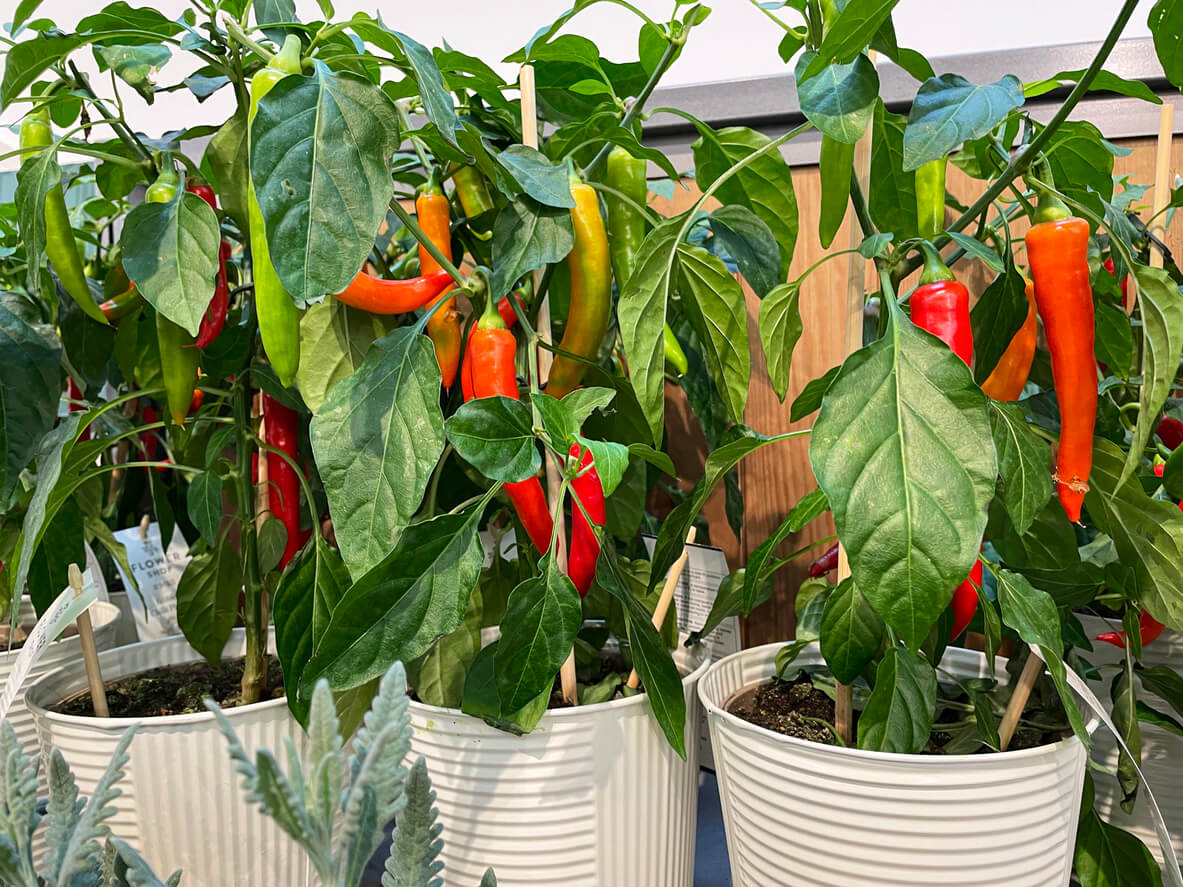
Hot chile peppers growing in pots
Hot peppers are easy to grow in containers. The key to happy container-grown hot pepper plants is to follow the plant—that is, transplant your pepper plant (gently!) as it grows. Even if you’re growing a pepper plant that’s going to top out at 4 feet or so, don’t plant your young seedling in an enormous pot to start out; begin with a pot that’s just the right size for where the plant is now, with some growing room. As the plant grows, move it to a bigger pot.
Make sure your soil is clean, weed-free, and nutrient-rich. Don’t reuse last season’s soil. It will be much better for your hot peppers if you start with fresh gardening soil—there’s even soil formulated especially for container gardening. And make sure your containers have good drainage; soggy soil can lead to root rot, which can spell disaster for your pepper plants.
Light
Hot peppers need a full day of sunlight to flourish. If you put your container on wheels, you can move your plants so they can catch some rays all day long.
Water
Water, sunlight, and soil are all essential ingredients for a successful pepper harvest. Watering is one of the easiest things to do—and therefore one of the easiest things to overdo. Your hot peppers need about 1 to 2 inches of water a week. Let the soil dry out between waterings. When in doubt, don’t water. Wherever your peppers are planted, they need soil with good drainage—and that includes containers! You can mulch the soil around your hot peppers to help retain some moisture. Also make sure your container has adequate drainage. Just don’t kill your crop with kindness—water just enough, but no more. Too much water can invite disease, and you want to keep your hot peppers healthy—leaves, roots, and all!
Soil
For hot peppers in containers or planters, use a commercial soil mix that’s formulated for vegetables. This gives your plants a healthy head start, and you’re less likely to introduce weeds or soilborne diseases by digging up soil from your garden.
Use fertilizer sparingly. If you already have soil that’s rich in organic matter, you don’t need to fertilize. If your soil could use a bit of a boost, choose an organic fertilizer in granular/pellet form that won’t overwhelm your plants. Choose a fertilizer with a lower nitrogen level, like one with a 5-10-10 nitrogen, phosphorus, and potassium (NPK) ratio. Follow the directions carefully.
Have you grown hot peppers in containers? Please tell us about your successes and challenges growing hot peppers in containers.


 Previous
Previous

